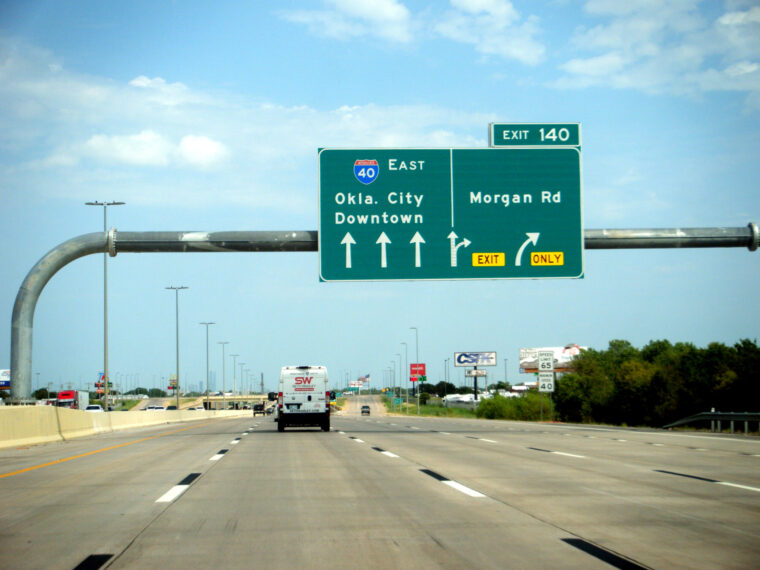
The Oklahoma Transportation Commission has approved the latest edition of the Oklahoma Department of Transportation’s (ODOT) Eight-Year Construction Work Plan, which allocates nearly $9 billion for transportation infrastructure improvements.
Scheduled for Fiscal Years 2025-2032, these projects look to enhance the safety and reliability of interstate and highway systems throughout the state.
“Our Eight-Year Plan serves as a guide for the department’s construction and maintenance efforts and allows us to ensure we are addressing as many transportation needs as we can statewide,” ODOT Executive Director Tim Gatz says. “Our main focus continues to be safety and reliability, and we are working to enhance safety by improving interchanges, adding shoulders to rural two-lane highways and addressing bridges statewide.”
RELATED: USDOT allocates $114 million to make rural roads in Oklahoma safer
Like many other states, Oklahoma has factored in inflation and rising supply costs, adjusting infrastructure plans to reflect the uncertain economic climate. Since 2022, construction costs have surged by more than 60%. In response, the state has reallocated certain projects within the Eight-Year Plan to account for these higher expenses.
Despite the cost increases, no projects were eliminated from the plan, ensuring that all planned improvements to the state’s infrastructure remain on track.
This year marks the 22nd edition of the Eight-Year Construction Work Plan, and ODOT’s efforts over the years have made a big difference in improving the safety and quality of Oklahoma’s transportation system. Since the plan began, the number of structurally-deficient bridges has dropped dramatically from 1,168 to fewer than 50, all of which are set to be addressed in the current plan. With ODOT’s ongoing efforts, the state remains in the top 10 nationwide for bridges rated in good condition.
Oklahoma’s Four-Year Asset Preservation Plan was also unveiled, featuring nearly $500 million in investments to keep the state’s highways in good shape through fiscal 2028. This plan focuses on preventative maintenance, with projects like resurfacing roads, rehabilitating bridges, painting and sealing joints.
Altogether, the $494 million plan includes 276 projects, tackling 81 highway bridges and resurfacing 1,964 miles of pavement to help extend the lifespan of the state’s transportation network.
An interactive map showing all projects from both plans can be found on the ODOT website.
The Eight-Year Plan includes:
$8.6 billion in total investment.
1,647 projects.
Addressing 632 bridges, including 299 structurally deficient or at-risk bridges.
3,755 miles of roadway improvements, including 954 miles of safety improvements on two-lane highways with deficient or no shoulders.
Notable projects in the Eight-Year Plan include:
In the Oklahoma City metro area, the final three phases of I-35 at I-240.
In the Tulsa metro area, widening US-169 between 66th and 86th St.
In Southeastern Oklahoma, US-70/Roosevelt Bridge replacement over Lake Texoma advanced from 2029 to 2026.
In South Central Oklahoma, widening I-35 to six-lanes in Love County.
In Southwestern Oklahoma, new interchanges will be built along the Duncan Bypass in Stephens County, as well as along US-62 and Goodyear Blvd. in Comanche County.
In North Central Oklahoma, the final phases of widening SH-33 to four-lanes between Guthrie and Stillwater.
In Western Oklahoma, an interchange improvement project along I-40 at I-40 Business in Custer County.
In Northwestern Oklahoma, adding shoulders to more than six miles of US-412/US-60 between Ringwood in Major County and the Garfield County line.
Another key focus of the Eight-Year Plan is the southern I-35 corridor. Over the course of the plan, 14 projects totaling more than $377 million are set to widen nearly 53 miles of I-35 between the Oklahoma River in Oklahoma City and the Texas border.
Photo courtesy Scott Nazelrod
The post Oklahoma committing $9 billion to transportation infrastructure improvements appeared first on Government Market News.
